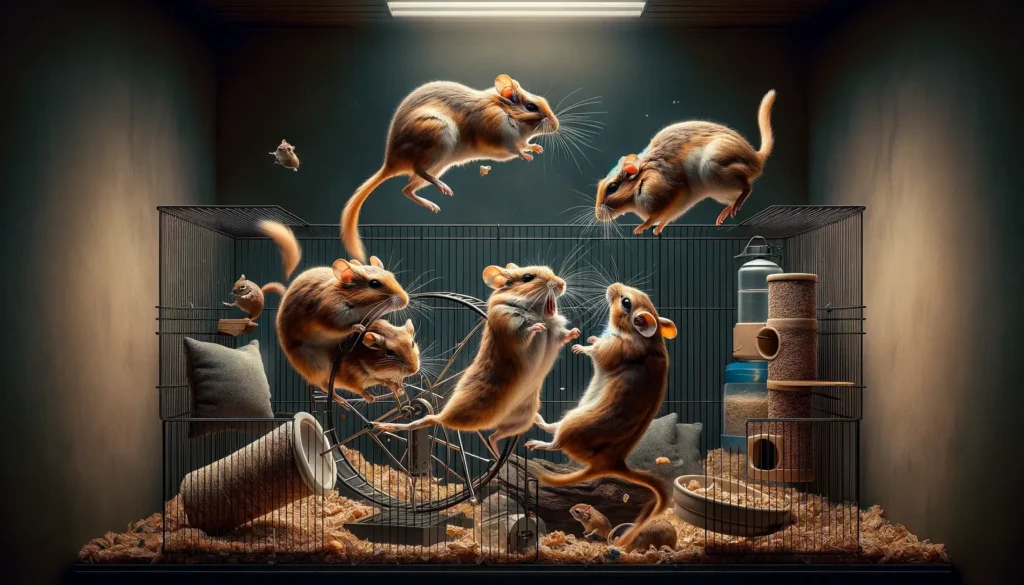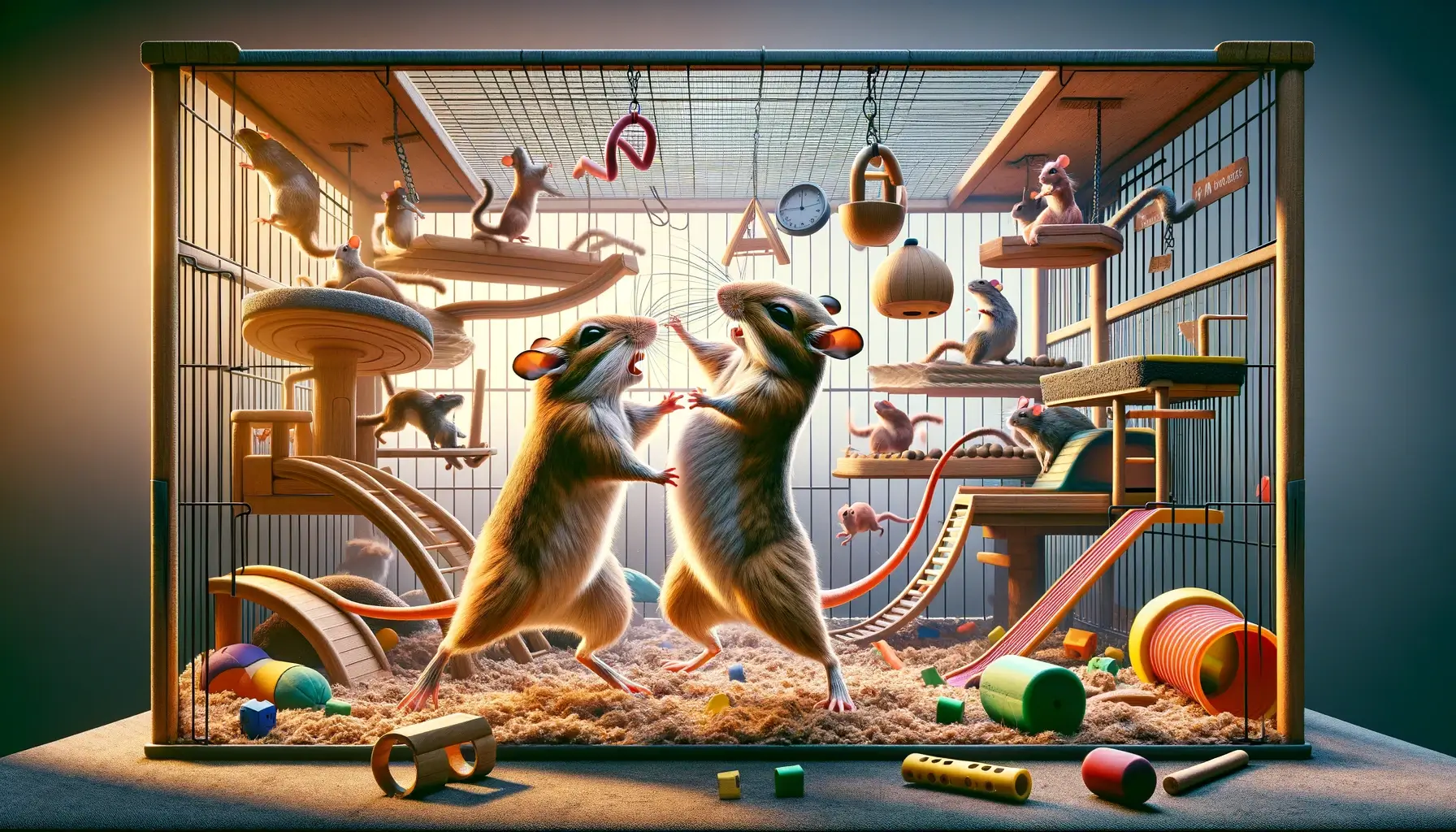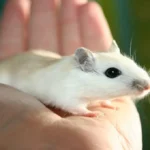Gerbils are known for their sociable nature, often living in close-knit groups that exhibit complex social behaviors.
However, even in these harmonious communities, a phenomenon known as declanning can occur, leading to stress and conflict within the group.
Declanning refers to the breakdown of these social bonds, resulting in aggression, fighting, and the eventual separation of the group members.
Understanding declanning is crucial for gerbil owners, as it not only affects the well-being of these small pets but also requires immediate and informed intervention to prevent harm.
What are the Causes of Declanning in Gerbils?
Declanning in gerbils can be triggered by various factors, ranging from changes in the group’s social hierarchy to environmental stressors. Recognizing these triggers is the first step in preventing and managing declanning incidents.
- Social Hierarchy Changes: Gerbils have a defined social structure within their groups, with dominant and submissive roles that help maintain harmony. However, as gerbils age or new members are introduced, these roles can shift, leading to disputes and potential declanning. For example, a younger gerbil may challenge an older, dominant gerbil, disrupting the group’s stability.
- Territorial Disputes: Gerbils are territorial animals, and their enclosure represents their domain. Introducing new gerbils, changing the enclosure setup, or even rearranging existing objects can trigger territorial aggression, leading to declanning. Such disputes are often over resources like food, nesting areas, or toys.
- Stress and Environmental Changes: Stressful conditions, such as overcrowding, inadequate hiding spaces, or frequent changes in the living environment, can contribute to declanning. Gerbils are sensitive to their surroundings, and significant changes or stressful conditions can lead to increased aggression and social breakdown.
Signs of Declanning in Gerbils

Recognizing the early signs of declanning is essential for intervening before serious harm occurs. Some of the most telling signs include:
- Aggressive Behaviors and Fighting: Unlike occasional playful tussles, fights stemming from declanning are intense and can result in injuries. Look for persistent chasing, biting, and “boxing” where gerbils stand on their hind legs and push at each other aggressively.
- Changes in Social Interaction: Gerbils that are beginning to declan may show changes in how they interact with each other. This can include avoiding certain group members, increased territorial marking, or aggressive posturing.
- Physical Signs: Injuries such as bite marks, especially on the back and tail, are clear indicators of declanning. Additionally, changes in sleeping patterns, such as gerbils sleeping apart when they previously cuddled together, can signal a breakdown in social bonds.
Understanding declanning in gerbils is crucial for any pet owner. By recognizing the causes and signs of this distressing behavior, you can take steps to prevent or manage declanning, ensuring the health and happiness of your furry friends.
Also read: Why Mother Gerbils Eat Their Babies?
Preventing Declanning in Gerbils
Creating a stable and stress-free environment for gerbils is key to preventing declanning. While it’s not always possible to avoid every trigger, there are several strategies gerbil owners can employ to minimize the risks and maintain harmony within the group.
Proper Gerbil Introduction Techniques
Introducing new gerbils to an existing group or pairing requires careful planning and patience. Use the split-cage method, where new and existing gerbils are placed in separate sections of the same cage with a mesh divider.
This allows them to see, smell, and interact without physical contact, reducing the risk of immediate aggression. Gradually, swap bedding and toys between the sections to mix their scents, fostering familiarity without direct confrontation.
Environmental Enrichment
A well-designed habitat can significantly reduce stress and territorial disputes among gerbils. Ensure the enclosure is spacious enough for the group, with multiple levels, tunnels, and hiding spots that allow gerbils to explore and retreat when needed.
Avoid overcrowding and provide ample resources, such as food bowls and water bottles, to prevent competition. Regularly changing the layout of the enclosure can also keep the environment stimulating and reduce boredom-related stress.
Monitoring and Managing Gerbil Social Dynamics
Observing your gerbils’ behavior closely can help you catch early signs of tension and intervene before declanning occurs. Look for changes in body language, eating habits, and interaction patterns.
If you notice potential issues, consider rearranging the enclosure or introducing new toys to distract and engage them. Regular, gentle handling can also help maintain a bond with your gerbils, making them more comfortable with human interaction and potentially less aggressive toward each other.
Managing Declanning: Steps to Take
Despite your best efforts, declanning can still occur. Knowing how to respond can help minimize injury and stress for your gerbils.
Immediate Actions Post-Declanning
Separate the fighting gerbils immediately to prevent further injury. Place them in different enclosures with identical setups to reduce stress. Assess any injuries and consult a veterinarian if necessary, especially for severe wounds. Allow the gerbils time to calm down and heal before considering any reintroduction attempts.
Split Cage Method for Reintroduction
After a cooling-off period, the split-cage method can be used for reintroduction. This process should be done gradually, with close monitoring for any signs of aggression. If successful, the divider can be removed for short supervised interactions, gradually increasing in duration as the gerbils show positive social behavior toward each other.
When to Seek Veterinary Care
Any injuries resulting from declanning should be evaluated by a veterinarian. In addition to treating wounds, a vet can provide advice on stress reduction and behavioral management to prevent future incidents.
FAQs
Can declanned gerbils ever live together again?
Yes, with careful management and reintroduction, declanned gerbils can sometimes be reunited. However, success varies depending on the severity of the initial declanning and the individual gerbils’ temperaments.
How can I tell if my gerbils are at risk of declanning?
Regular observation of your gerbils’ behavior is crucial. Signs of tension, such as increased aggression, changes in eating habits, or avoidance behaviors, can indicate a risk of declanning.
What are the long-term effects of declanning on a gerbil?
Declanning can lead to stress, injuries, and in severe cases, death. Long-term, it may also result in behavioral changes, such as increased aggression or fearfulness. Providing a safe, enriched environment and careful monitoring can help mitigate these effects.
Is declanning common in all gerbil groups?
Declanning can occur in any gerbil group but is more common in certain situations, such as overcrowded conditions, improper introductions, or significant changes in the group’s social hierarchy.
Conclusion
In conclusion, declanning in gerbils is a complex phenomenon rooted in their social and territorial nature. By understanding the causes, recognizing the signs, and implementing preventive measures, gerbil owners can significantly reduce the risk of declanning.
Should declanning occur, knowing how to manage the situation effectively can help ensure the safety and well-being of your gerbil companions.
Remember, the key to a harmonious gerbil habitat lies in careful observation, environmental enrichment, and patience. With these strategies, you can foster a peaceful and stimulating environment for your gerbils to thrive in.











